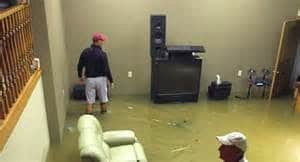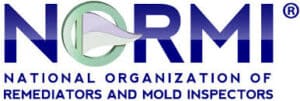What To Do When A Home Suffers From Water Damage

When a major storm passes close to the house, the home may suffer water damage that is difficult to repair. There are many things a family can do to begin repairing any destruction, but a certified professional will likely be needed to get rid of any serious health or structural threats. Contaminated storm surges or floods can carry pathogens and become a breeding ground for mold. If allowed to fester, these mold spores can spread throughout the building and become even more difficult to remove. In many cases, governmental agencies could condemn the structure if the microbial threat is too great.
The main reason why a home is sensitive to water damage is because moisture is difficult to detect once the floods recede. Standing liquids can encourage microbial growth within 24 hours and can saturate all kinds of textiles and seep through drywall. Moisture may collect behind the walls, where mold and bacteria may multiply out of sight. If a family reacts quickly enough, clothes and furniture may be saved. However, people must be careful when entering a building that has recently been flooded. Exposure to wildlife and contaminated liquids can result in serious injury.
Before entering a home affected by water damage, make sure the electrical power is shut off. Exposed wires or plugged in devices can electrocute people, resulting in major injury or even death. Also, it’s best to move slowly through the building when re-entering it for the first time. Snakes, reptiles or rodents may be hiding under debris and could lash out and bite suddenly. To protect against wildlife and airborne contaminants, wear protective clothing from head to toe, including a vapor respirator, rubber gloves and eye protection. Also, wear thick boots that can withstand puncturing and animal bites.
Professional restoration services can quickly identify what items in the home are compromised by water damage. Normally, anything that is porous may need to be discarded if it has come in contact with contaminated fluids. These items, like mattresses, box springs, pillows and particleboard, trap more moisture than other materials and foster the growth of microbes. A family can prepare for professional cleaning by getting rid of these items before the technicians arrive, but be sure to properly record and itemize the items for insurance purposes prior to disposing.
Once professionals arrive at the building, they will be able to track down any pockets of excess moisture and remove them. Certified technicians can locate these pockets of moisture using equipment that measures the moisture in hidden pockets and behind tile and other materials that may not feel wet on the outside. When these moisture pockets are found, the technicians will expose them to air by removing any drywall or other materials in the way. Once the location of the moisture has been determined, the professionals will begin the cleanup process that may include pressure washing the area with powerful detergents. These technicians are also able to speed up the drying process to prevent the growth of any molds or other harmful bacteria. If the professional locate mold or bacteria colonies, they will know how to identify and remove the threat using chemical or mechanical methods.
It’s important for a family to hire professionals that are certified through a reputable organization. Technicians trained in this area know how to find compromised areas and do what it takes to restore them.
Source: Institute of Inspection, Cleaning, and Restoration Certification
For anything related to water damage cleanup, mold testing, mold removal, or air ducts, call Aspen at 978.328.0882. Or email [email protected].
We are licensed and insured and members of the National Organization of Remediators and Mold Inspectors (NORMI), the National Air Duct Cleaners Association (NADCA), and the Institute of Inspection Cleaning and Restoration Certification (IICRC)




